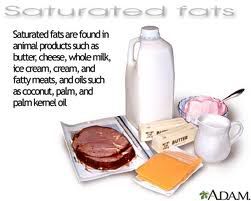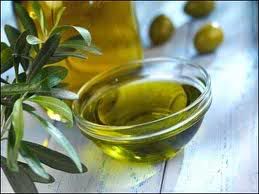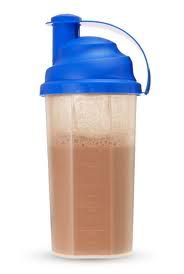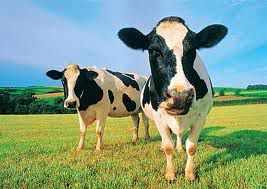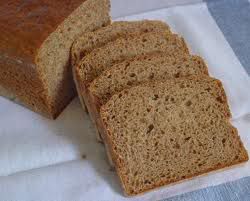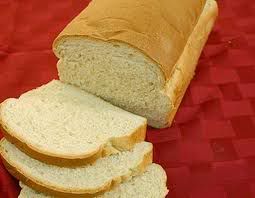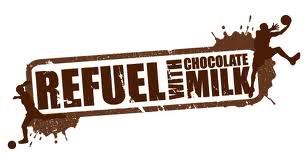The first supplement I immediately researched was glutamine! Glutamine is a very powerful amino acid that is used for recovery of the muscles. In my opinion glutamine is by far better than creatine! Glutamine allows for noticeably quicker recovery after your workouts, as well it will reduce soreness after your workouts. When I supplement with glutamine, I try to get about 15 grams of glutamine throughout the day in approximately 5 gram dosages. So what are some good natural sources of glutamine? Well of course any protein source is good for obtaining amino acids, but we can’t be eating meat ALL the time! Spinach, sunflower seeds, and parsley are all good sources of glutamine. Just be sure to note that heat will destroy the amino acid glutamine, so these foods are best when eaten raw.
 Yes, Popeye had it right kids, eat your spinach! One article I read from Spinachwords.com claimed that 1 cup or 7.5oz of spinach had approximately .75 grams of glutamine in it. Now this isn’t a whole lot, but this is a very good way to supplement your glutamine intake for the day.
Yes, Popeye had it right kids, eat your spinach! One article I read from Spinachwords.com claimed that 1 cup or 7.5oz of spinach had approximately .75 grams of glutamine in it. Now this isn’t a whole lot, but this is a very good way to supplement your glutamine intake for the day. Sunflower seeds are a great source of glutamine, but I also found they were a great source of arginine as well (a two for one!). One article I read recommended you eat a half cup of sunflower seeds throughout the day. A half cup of sunflower seeds will bring you 3 grams of glutamine!
Every website I looked at that gave suggestions for good sources of glutamine pointed me straight to parsley. Unfortunately I wasn’t able to find out exactly how much glutamine parsley contained. However I did find out this, parsley contains a flavone called apigenin. According to Dr.’s Donald R. Buhler and Cristobal Miranda of Oregon State University a flavone is a type of flavonoid. In a nut shell flavonoids are natural occurring compounds found in fruits and vegetables that have diverse biochemical and antioxidant effects. So what is apigenin’s biochemical effect? Apigenin is supposed to help block bad estrogen from inhibiting the body’s use of testosterone. Apparently this has a strength-boosting effect. According to an article I read entitled: “14 Natural Anabolics: Power Foods that Act Like Supplements” apigenin can be found in 10mg dosages in supplements. So how much parsley do you have to chow down on to get the amount that is in supplements? Get this, one tablespoon of chopped parsley will suffice!
The next popular supplement that we all know and love is creatine. There are so many myths and misconceptions out there about creatine it isn’t even funny. Believe it or not your body actually needs creatine! In fact your body when it doesn’t have enough creatine from dietary needs, will actually synthesize its own creatine. When I supplement with creatine, I try to get about 5 grams before my workout and 5 grams after my workout. Creatine is a naturally formed substance and is pretty easy to find. In one pound of lean beef you will be able to find 5 grams of creatine. You can also find creatine in fish such as salmon and tuna, and any type sashimi is also a great source. In salmon you will find 4.5 grams of creatine in one pound. Fish is probably the better source, because it also contains a high amount of the amino acid methionine, which is used in the synthesis of creatine.
 Next on the list is arginine. Arginine is used to increase the nitrogen levels in the body, which in turn vasodilates blood vessels allowing for greater blood flow within the body. This greater blood flow allows for more oxygen and nutrients to get to your muscles in order to provide energy during your workout. The increase blood flow also is beneficial to your muscles when they are recovering after your workout. When supplementing with arginine I try to get about 3.5 grams before my work out and about 3 grams before I go to bed at night. Again any protein source is great for getting amino acids, but what other foods can you eat that are high in arginine? The answer is nuts and seeds! The best sources would be pumpkin seeds, peanuts, and sesame seeds. Other good choices would be almonds, walnuts, and hazlenuts. I found in my research that a 100 gram serving of these seeds and nuts can contain anywhere from 2-4 grams of arginine. Unfortunately a 100 gram serving of nuts is going to contain a lot of fat, not to mention eating this amount of nuts everyday could get expensive. Still though a little bit is better than nothing! Plus you will be getting a great amount of arginine from all the protein you eat during the day. But don’t worry I have one more way you can get arginine.
Next on the list is arginine. Arginine is used to increase the nitrogen levels in the body, which in turn vasodilates blood vessels allowing for greater blood flow within the body. This greater blood flow allows for more oxygen and nutrients to get to your muscles in order to provide energy during your workout. The increase blood flow also is beneficial to your muscles when they are recovering after your workout. When supplementing with arginine I try to get about 3.5 grams before my work out and about 3 grams before I go to bed at night. Again any protein source is great for getting amino acids, but what other foods can you eat that are high in arginine? The answer is nuts and seeds! The best sources would be pumpkin seeds, peanuts, and sesame seeds. Other good choices would be almonds, walnuts, and hazlenuts. I found in my research that a 100 gram serving of these seeds and nuts can contain anywhere from 2-4 grams of arginine. Unfortunately a 100 gram serving of nuts is going to contain a lot of fat, not to mention eating this amount of nuts everyday could get expensive. Still though a little bit is better than nothing! Plus you will be getting a great amount of arginine from all the protein you eat during the day. But don’t worry I have one more way you can get arginine. Your body can produce arginine from another amino acid, citrulline! Citrulline is becoming a popular ingredient in most NO supplements, due to the body’s ability to produce arginine using it. The addition of citrulline will also make your NO supplement very expensive. But guess what? There is a food that is an incredible source of citrulline, watermelon! The article I mentioned before: “14 Natural Anabolics: Power Foods that Act Like Supplements” stated that you could eat 24 ounces of watermelon pre-workout. This would provide you with 20 ounces of water, 50 grams of carbohydrates, and most importantly 3 grams of citrulline! 3 grams of citrulline should be plenty for your workout, this amount can be found in a lot of supplements.
Your body can produce arginine from another amino acid, citrulline! Citrulline is becoming a popular ingredient in most NO supplements, due to the body’s ability to produce arginine using it. The addition of citrulline will also make your NO supplement very expensive. But guess what? There is a food that is an incredible source of citrulline, watermelon! The article I mentioned before: “14 Natural Anabolics: Power Foods that Act Like Supplements” stated that you could eat 24 ounces of watermelon pre-workout. This would provide you with 20 ounces of water, 50 grams of carbohydrates, and most importantly 3 grams of citrulline! 3 grams of citrulline should be plenty for your workout, this amount can be found in a lot of supplements.Continuing on with the topic of keeping your nitric oxide levels high, there is also a vitamin that will help with this. I’m talking about vitamin C! Vitamin C will keep nitric oxide levels high in the body, and is essential in protein synthesis. Vitamin C is also of course a great antioxidant, and when taken will reduce soreness in your muscles after your workout! When supplementing with vitamin C I try to get about 3,000 mg throughout the day in 500 to 1000mg dosages. Let’s think here where can we get vitamin C from? Hmmm… Were you going to say oranges and other citrus fruit? Well yes you are correct in thinking that, but you might be surprised to hear that yellow bell peppers have three times the amount of vitamin C per weight as an orange! In fact according to an article I found at HealthAliciousNess.com oranges ranked number 9 in foods with the highest concentration of Vitamin C. You can view the article
Another supplement taken by bodybuilders, which is a staple in every supplementation program, is a multivitamin! Now I don’t suppose you could replace a good quality multivitamin, but there are some foods that are vitamin dense. As I was doing research for this post search after search for foods that were high in certain vitamins and minerals, I would always get dark leafy greens! Spinach, Swiss chard, turnip greens, kale, collard greens, and arugula are all LOADED with vitamins! Another vitamin dense food I came across was dried fruit. Basically the fruit maintains all the vitamins it had when it was fresh, but watch out because they are loaded with calories. Dried fruit might be a good addition to
your diet if you are trying to gain weight.
Now that you have all this knowledge of what to add to your diet to make it more balanced, you need to do one more thing. When you don’t take steroids and you don’t take supplements, every little BIT counts! You must not forget about digestive health! Eating all of these healthy foods will not do your body any good if your digestive system isn’t working efficiently. Not to worry, there are a few things you can add to your diet to improve digestion.
 First off you will need to add digestive enzymes to your diet. Digestive enzymes will help break down your food in order for it to be used. Foods that contain digestive enzymes are pineapple, papaya, and figs. The second thing you will need to do is increase the good bacteria in your intestines. Promoting the growth of good bacteria keeps your intestines healthy, and when your intestines are healthy they break down and absorb more nutrients! Yogurt is a great source of probiotics as well as fermented foods such as sauerkraut and kimchi. The third thing you will need for digestive health is plenty of fiber! As I went over in Part 2 fiber is very important because it keeps everything in your intestines moving. One source of fiber you might find of interest is grapefruit. Grapefruit contains a great amount of fiber called pectin. Pectin is particular great at slowing the digestion of carbohydrates (a characteristic of fiber I went over in Part 2). When trying to lose that stubborn stomach fat trying adding three glasses of grapefruit juice throughout your day! The fourth and final thing that is a must for digestion is probably one of the most anabolic substances! What’s this magical substance you’re wondering? It’s water, water, and more water! Sorry it isn’t some sort of special “super-food”, but yeah water will make or break your diet. Your body needs plenty of water in order to aid digestion. My suggestion is to drink 8 to 16 ounces with every meal!
First off you will need to add digestive enzymes to your diet. Digestive enzymes will help break down your food in order for it to be used. Foods that contain digestive enzymes are pineapple, papaya, and figs. The second thing you will need to do is increase the good bacteria in your intestines. Promoting the growth of good bacteria keeps your intestines healthy, and when your intestines are healthy they break down and absorb more nutrients! Yogurt is a great source of probiotics as well as fermented foods such as sauerkraut and kimchi. The third thing you will need for digestive health is plenty of fiber! As I went over in Part 2 fiber is very important because it keeps everything in your intestines moving. One source of fiber you might find of interest is grapefruit. Grapefruit contains a great amount of fiber called pectin. Pectin is particular great at slowing the digestion of carbohydrates (a characteristic of fiber I went over in Part 2). When trying to lose that stubborn stomach fat trying adding three glasses of grapefruit juice throughout your day! The fourth and final thing that is a must for digestion is probably one of the most anabolic substances! What’s this magical substance you’re wondering? It’s water, water, and more water! Sorry it isn’t some sort of special “super-food”, but yeah water will make or break your diet. Your body needs plenty of water in order to aid digestion. My suggestion is to drink 8 to 16 ounces with every meal!With this arsenal of information you should be armed and ready to go to make a very successful diet. As you have read here, there are many foods to eat, from all different food groups. You really need to eat a variety of things every day to get everything your body needs. The best thing to know when trying to follow a strict diet is that you can’t possibly get everything you need to eat everyday so it’s always good to change your diet up from week to week so you are not deficient in any areas. Also any serious lifter could never completely throw out a supplementation program and substitute it by eating regular food. I really don’t think anyone on Earth could be capable of this. So get out there, diet hard, lift even harder, and get huge!
The Gym Maniac


